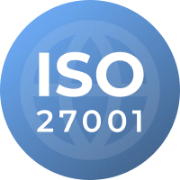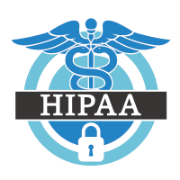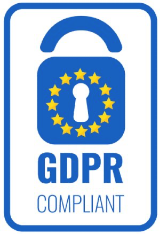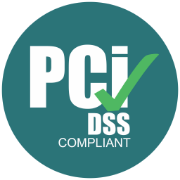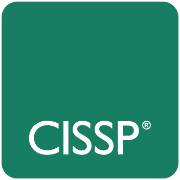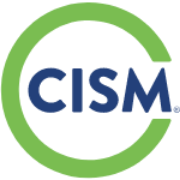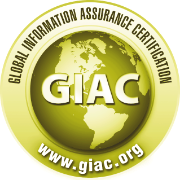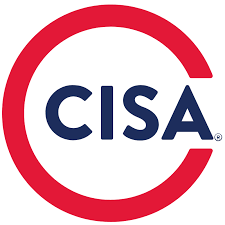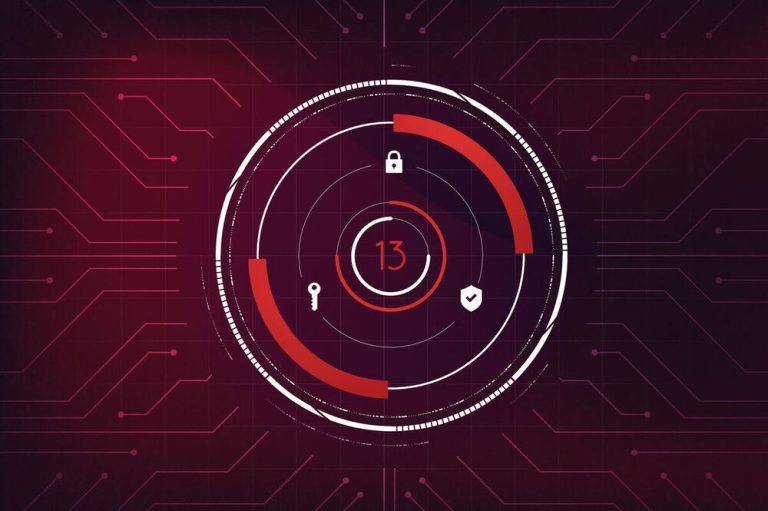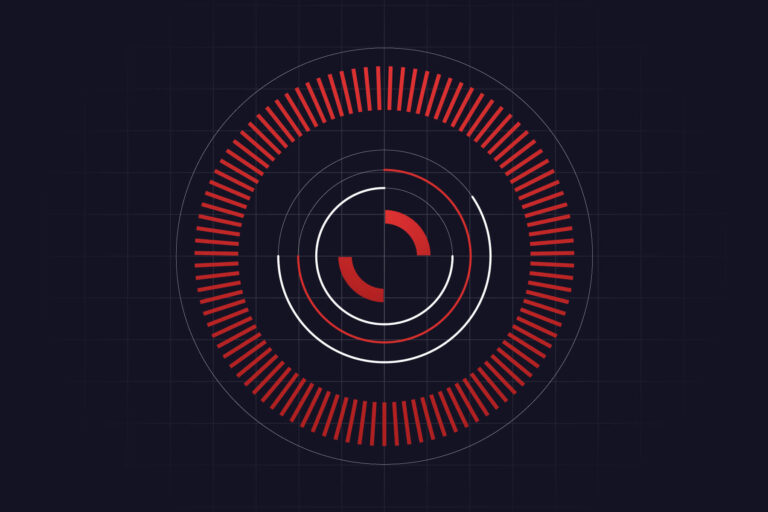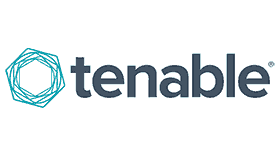OVERVIEW
ISO 27001 is a globally recognized standard for information security management systems (ISMS). It outlines a framework for managing and protecting sensitive information using a risk management approach.
The standard provides a systematic and structured approach to managing an organization’s information security risks, by defining a set of requirements for implementing and maintaining an ISMS. These requirements cover a wide range of areas, including risk assessment, security controls, asset management, access control, incident management, and business continuity.
ISO 27001 is applicable to organizations of all types and sizes, in any industry or sector, that handle sensitive information. The standard is designed to help organizations protect their information assets, maintain confidentiality, integrity, and availability of information, and comply with legal and regulatory requirements.
ISO 27001 certification is a formal recognition that an organization has implemented and maintains an effective information security management system. Achieving certification requires an independent assessment by a third-party auditor to verify that the organization’s ISMS meets the requirements of the standard.
STEP-BY-STEP GUIDE FOR ISO 27001 Compliance
High-level step-by-step guide to ISO 27001 compliance:
Establish a project team: Appoint a team to manage the ISO 27001 compliance project, including a project manager and representatives from key departments within the organization.
Scope the ISMS: Define the scope of the information security management system (ISMS), including the information assets to be protected and the boundaries of the system.
Conduct a risk assessment: Identify and assess the risks to the organization’s information assets, and determine the appropriate risk treatment measures.
Develop an information security policy: Develop a policy that sets out the organization’s commitment to information security and the objectives of the ISMS.
Develop an ISMS framework: Develop an overall framework for the ISMS, including the security controls to be implemented and the policies and procedures to be followed.
Implement the ISMS: Implement the ISMS framework, including the security controls and policies and procedures.
Conduct training and awareness: Ensure that all employees are aware of the ISMS and their responsibilities for information security, and provide training as necessary.
Monitor and measure the ISMS: Monitor and measure the effectiveness of the ISMS, including the performance of the security controls, and report on the results.
Conduct Internal Audits: Conduct regular Internal Audits to ensure that the ISMS is functioning effectively and to identify areas for improvement.
Conduct management review: Conduct regular management reviews of the ISMS to ensure that it continues to meet the organization’s objectives and to identify areas for improvement.
Implement corrective actions: Take corrective actions to address any identified non-conformities or areas for improvement.
Seek certification: Engage an accredited certification body to conduct an external audit of the ISMS and certify that it is compliant with ISO 27001.
It’s important to note that this is a high-level guide, and the specific steps and activities required for ISO 27001 compliance will depend on the individual circumstances of the organization. Additionally, ISO 27001 compliance is an ongoing process that requires continual improvement and monitoring to ensure that the ISMS remains effective and up-to-date with the organization’s evolving information security risks and requirements.
WHO DOES THE ISO 27001 AFFECT?
ISO 27001 is relevant to any organization that wants to establish, implement, maintain, and continually improve an information security management system (ISMS) to protect its information assets. This includes organizations of all types, sizes, and sectors, including:
Private sector organizations: such as businesses, corporations, partnerships, and sole proprietors.
Public sector organizations: such as government agencies, departments, and organizations.
Non-profit organizations: such as charities, foundations, and non-governmental organizations (NGOs).
Educational institutions: such as schools, colleges, and universities.
Healthcare organizations: such as hospitals, clinics, and medical practices.
Financial institutions: such as banks, insurance companies, and investment firms.
Information technology (IT) companies: such as software developers, web hosting providers, and cloud service providers.
In short, any organization that processes, stores, transmits, or uses information needs to consider information security and may benefit from implementing ISO 27001 to demonstrate their commitment to protecting their information assets.
WHAT ARE THE ISO 27001 REQUIREMENTS?
The ISO 27001 standard specifies the following requirements for an information security management system (ISMS):
Leadership and commitment: Top management must demonstrate leadership and commitment to the ISMS by establishing an information security policy and providing the necessary resources to implement and maintain it.
Scope of the ISMS: The scope of the ISMS must be defined, including the boundaries of the system, the information assets to be protected, and the risk assessment approach.
Risk assessment and treatment: The organization must identify and assess the risks to its information assets, determine the appropriate risk treatment measures, and implement controls to mitigate the risks.
Information security policy: The organization must develop and implement an information security policy that reflects its commitment to information security and the objectives of the ISMS.
Roles and responsibilities: The roles and responsibilities for information security must be defined and communicated throughout the organization.
Training, awareness, and competence: All employees must be trained and made aware of their roles and responsibilities for information security, and their competence must be evaluated and maintained.
Communication: Communication processes for information security must be established, including communication with external parties.
Operational planning and control: The organization must establish operational procedures and implement controls to ensure the effective implementation of the ISMS.
Monitoring, measurement, analysis, and evaluation: The organization must establish processes to monitor, measure, analyze, and evaluate the performance and effectiveness of the ISMS.
Internal audit: The organization must conduct periodic Internal Audits of the ISMS to determine whether it conforms to the standard and is effectively implemented and maintained.
Management review: The top management must review the performance of the ISMS at defined intervals to ensure its continuing suitability, adequacy, and effectiveness.
Continual improvement: The organization must continually improve the effectiveness of the ISMS by addressing non-conformities, implementing corrective actions, and identifying opportunities for improvement.
It’s important to note that these are the basic requirements for ISO 27001 compliance. Depending on the organization’s size, scope, and complexity, additional requirements may apply. Additionally, the standard provides a framework for establishing an ISMS, but does not prescribe specific security controls or technologies that must be implemented. This allows organizations to tailor their ISMS to their specific needs and circumstances.
HOW IS ISO 27001 COMPLIANCE ENFORCED?
ISO 27001 compliance is voluntary, and there is no formal enforcement mechanism or certification body. Organizations that choose to implement ISO 27001 can undergo a certification audit by an accredited third-party certification body to demonstrate their compliance with the standard. The certification body will conduct an assessment of the organization’s ISMS against the requirements of ISO 27001 and issue a certificate if the organization meets the standard.
ISO 27001 certification is not mandatory, but it can provide several benefits to organizations, such as:
Demonstrating to customers, partners, and other stakeholders that the organization has implemented an effective ISMS to protect their information assets.
Improving the organization’s reputation and competitiveness by demonstrating a commitment to information security.
Helping the organization comply with legal and regulatory requirements related to information security.
Enhancing the organization’s risk management capabilities by identifying and addressing information security risks.
Reducing the likelihood and impact of information security incidents.
In addition to certification audits, organizations may also undergo periodic internal audits to ensure their ISMS remains effective and compliant with ISO 27001. External audits by regulatory or industry bodies may also assess the organization’s information security practices and require compliance with ISO 27001 as a condition for doing business. Ultimately, the responsibility for ensuring compliance with ISO 27001 falls on the organization and its management team.
DOES THE ISO 27001 APPLY TO ANY SPECIFIC INDUSTRIES?
No, ISO 27001 does not apply to any specific industries. The standard is applicable to all organizations, regardless of their industry or sector. Any organization that processes, stores, transmits, or uses information can implement ISO 27001 to establish an information security management system (ISMS) to protect their information assets.
However, some industries may be subject to specific regulations or standards related to information security that may overlap with ISO 27001. For example, healthcare organizations in the United States must comply with the Health Insurance Portability and Accountability Act (HIPAA), which includes requirements for safeguarding protected health information (PHI). Financial institutions are subject to regulations such as the Payment Card Industry Data Security Standard (PCI DSS) and the Gramm-Leach-Bliley Act (GLBA), which include requirements for protecting sensitive financial data.
In these cases, ISO 27001 can serve as a useful framework for complying with these regulations and ensuring the organization’s information security practices are aligned with industry best practices. Additionally, ISO 27001 can be integrated with other standards and frameworks, such as ITIL and COBIT, to create a comprehensive information security management system that meets the organization’s specific needs and requirements.
What are the benefits of being ISO 27001 compliant?
Demonstrating a commitment to information security: Implementing ISO 27001 demonstrates to customers, partners, and stakeholders that the organization is committed to protecting their information assets and has implemented an effective information security management system (ISMS) to manage information security risks.
Enhancing the organization’s reputation and credibility: ISO 27001 certification can enhance the organization’s reputation and credibility by demonstrating that the organization has met an internationally recognized standard for information security management.
Meeting regulatory and legal requirements: Compliance with ISO 27001 can help the organization meet regulatory and legal requirements related to information security, such as GDPR, HIPAA, PCI DSS, and GLBA.
Reducing information security risks: Implementing ISO 27001 can help the organization identify and address information security risks, reducing the likelihood and impact of information security incidents.
Improving efficiency and productivity: ISO 27001 can help the organization streamline its information security management processes and procedures, improving efficiency and productivity.
Enhancing business opportunities: ISO 27001 certification can open up new business opportunities by demonstrating to potential customers, partners, and stakeholders that the organization has implemented an effective ISMS to protect their information assets.
Improving supply chain security: ISO 27001 certification can help improve supply chain security by demonstrating to partners and suppliers that the organization has implemented an effective ISMS to manage information security risks.
Overall, ISO 27001 compliance can help organizations of all sizes and industries improve their information security posture, reduce risks, and enhance their reputation and competitiveness.
CAN WE ACHIEVE ISO 27001 COMPLIANCE ON OUR OWN?
Yes, an organization can achieve ISO 27001 compliance on its own, but it can be a challenging and time-consuming process that requires significant resources and expertise. The organization must establish an information security management system (ISMS) that meets the requirements of ISO 27001 and implement the necessary controls to manage information security risks.
Implementing an ISMS involves several steps, including:
- Establishing the scope and objectives of the ISMS.
- Conducting a risk assessment to identify information security risks.
- Developing a risk treatment plan to address identified risks.
- Implementing the necessary controls to manage information security risks.
- Establishing a management framework to ensure the ongoing effectiveness of the ISMS.
- Conducting internal audits to monitor the effectiveness of the ISMS.
- Conducting management reviews to evaluate the performance of the ISMS and identify opportunities for improvement.
While it is possible to achieve ISO 27001 compliance on your own, it can be beneficial to seek the assistance of a consultant or external auditor with experience in implementing ISMSs and achieving ISO 27001 certification. A consultant can provide guidance on the implementation process, identify gaps in the organization’s information security practices, and recommend improvements to help the organization achieve ISO 27001 compliance more efficiently.
Regardless of whether an organization chooses to pursue ISO 27001 compliance on its own or with the assistance of a consultant, it is essential to ensure that the ISMS is tailored to the organization’s needs and that it remains effective and compliant with ISO 27001 over time.
WHAT IS THE TYPICAL COST OF ACHIEVING ISO 27001 COMPLIANCE?
The cost of achieving ISO 27001 compliance can vary widely depending on several factors, such as the size and complexity of the organization, the scope of the ISMS, the maturity of the organization’s information security practices, and the level of expertise and resources available within the organization.
Some of the costs associated with achieving ISO 27001 compliance may include:
Initial implementation costs: These can include the cost of developing policies and procedures, conducting a risk assessment, developing a risk treatment plan, and implementing the necessary controls to manage information security risks.
Employee training and awareness: Employee training and awareness activities are critical to the success of an ISMS and may include training on information security policies and procedures, awareness campaigns, and ongoing training and education programs.
Internal audits: Conducting internal audits to monitor the effectiveness of the ISMS and identify areas for improvement can be time-consuming and may require specialized skills and resources.
Certification costs: If the organization chooses to seek certification from a third-party auditor, there will be costs associated with the certification process, including audit fees, travel expenses, and ongoing maintenance fees.
The cost of achieving ISO 27001 compliance can vary widely, but it is generally considered a significant investment for most organizations. A study by the British Standards Institution (BSI) found that the average cost of achieving ISO 27001 certification for a small organization (less than 50 employees) was approximately £21,000 (about $29,000 USD), while the average cost for a large organization (over 250 employees) was approximately £85,000 (about $117,000 USD).
However, it is important to note that the cost of achieving ISO 27001 compliance can be offset by the benefits of certification, such as improved information security practices, increased efficiency, and enhanced reputation and competitiveness. Additionally, organizations that have already implemented effective information security practices may find that the cost of achieving ISO 27001 compliance is lower than organizations that are starting from scratch.
At Prodigy 13 we can help you get through the ISO 27001 process with competitive and flexible pricing model with 100% success guarantee! For more information and free compliance assessment please review our Managed and Assisted compliance services.
WHAT ARE THE DIFFERENCES BETWEEN ISO 27001 AND SOC 2?
ISO 27001 and SOC 2 are both standards that organizations can use to demonstrate their commitment to information security. However, there are some key differences between the two standards:
Focus: ISO 27001 is focused on information security management, while SOC 2 is focused on the controls that service organizations use to protect customer data. ISO 27001 is a broader standard that covers all aspects of information security management, while SOC 2 is specifically focused on service organizations that provide services to other organizations.
Certification: ISO 27001 is a certification standard, while SOC 2 is a compliance standard. This means that organizations can become certified to ISO 27001 by meeting the requirements of the standard and undergoing an independent audit, while SOC 2 requires organizations to demonstrate that they are in compliance with the standard.
Third-party assessment: Both standards require an independent third-party assessment, but the assessments are conducted differently. ISO 27001 requires a certification audit to be conducted by an accredited certification body, while SOC 2 assessments can be conducted by a CPA or other qualified assessor.
Reporting: SOC 2 reports are designed to be shared with customers and other stakeholders, while ISO 27001 certification is a statement of compliance that can be used to demonstrate an organization’s commitment to information security to a wider audience.
Framework: ISO 27001 is based on the Plan-Do-Check-Act (PDCA) framework, which is a continuous improvement cycle, while SOC 2 is based on the Trust Services Criteria (TSC) framework, which includes five categories of controls: security, availability, processing integrity, confidentiality, and privacy.
In summary, ISO 27001 is a broader standard that covers all aspects of information security management, while SOC 2 is focused on the controls that service organizations use to protect customer data. ISO 27001 is a certification standard, while SOC 2 is a compliance standard, and the assessments are conducted differently. Additionally, SOC 2 reports are designed to be shared with customers and other stakeholders, while ISO 27001 certification is a statement of compliance that can be used to demonstrate an organization’s commitment to information security to a wider audience.
WHAT ARE THE DIFFERENCES BETWEEN ISO 27001 AND NIST CSF?
ISO 27001 and NIST CSF are both frameworks for managing information security, but there are some key differences between the two:
Scope: ISO 27001 is a comprehensive standard for information security management, while the NIST CSF is a high-level framework for managing cybersecurity risk. ISO 27001 covers all aspects of information security management, including policies, procedures, and controls, while the NIST CSF focuses on risk management at a strategic level.
Implementation: ISO 27001 is a prescriptive standard that provides detailed requirements for information security management, while the NIST CSF is a flexible framework that organizations can adapt to their specific needs. ISO 27001 requires organizations to follow a structured approach to information security management, while the NIST CSF provides a flexible framework that can be customized to meet an organization’s specific requirements.
Certification: ISO 27001 is a certification standard, while the NIST CSF is not. This means that organizations can become certified to ISO 27001 by meeting the requirements of the standard and undergoing an independent audit, while there is no formal certification process for the NIST CSF.
Risk management: The NIST CSF places a strong emphasis on risk management, while ISO 27001 requires organizations to identify and manage risks as part of their information security management system. The NIST CSF provides a framework for managing cybersecurity risk at a strategic level, while ISO 27001 requires organizations to implement a risk management process as part of their overall information security management system.
In summary, ISO 27001 is a comprehensive standard for information security management, while the NIST CSF is a flexible framework for managing cybersecurity risk. ISO 27001 is a prescriptive standard with a structured approach to information security management, while the NIST CSF provides a flexible framework that can be customized to meet an organization’s specific needs. Additionally, ISO 27001 is a certification standard, while the NIST CSF is not, and the NIST CSF places a strong emphasis on risk management at a strategic level.
ISO 27001 VS HIPAA
ISO 27001 and HIPAA (Health Insurance Portability and Accountability Act) are both frameworks for managing information security, but they have different scopes and requirements:
Scope: ISO 27001 is a comprehensive standard for information security management that applies to all types of organizations, while HIPAA is a US law that applies specifically to healthcare organizations and their business associates.
Requirements: ISO 27001 requires organizations to implement a comprehensive set of policies, procedures, and controls to manage information security risks, while HIPAA requires healthcare organizations to implement specific administrative, physical, and technical safeguards to protect the privacy, confidentiality, and integrity of electronic protected health information (ePHI).
Certification: ISO 27001 is a certification standard that requires organizations to undergo an independent audit to demonstrate compliance with the standard, while HIPAA does not have a formal certification process.
Penalties: Non-compliance with HIPAA can result in significant penalties, including fines and legal action, while non-compliance with ISO 27001 may result in loss of certification or reputational damage.
In summary, ISO 27001 is a comprehensive standard for information security management that applies to all types of organizations, while HIPAA is a US law that applies specifically to healthcare organizations and their business associates. ISO 27001 requires organizations to implement a comprehensive set of policies, procedures, and controls to manage information security risks, while HIPAA requires healthcare organizations to implement specific safeguards to protect ePHI. Additionally, ISO 27001 is a certification standard, while HIPAA does not have a formal certification process, and non-compliance with HIPAA can result in significant penalties.
At Prodigy 13 we can help you achieve 100% compliance with ISO 27001, PCI DSS, SOC 2, and HIPAA. For more information and for free compliance assessment, please review our ISO 27001 Audit Readiness service, or simply get a Quick Quote.
Related articles: ISO 27001 Certification Process, ISO 27001 Internal Audits, Annex A, ISO 27001 Policies
